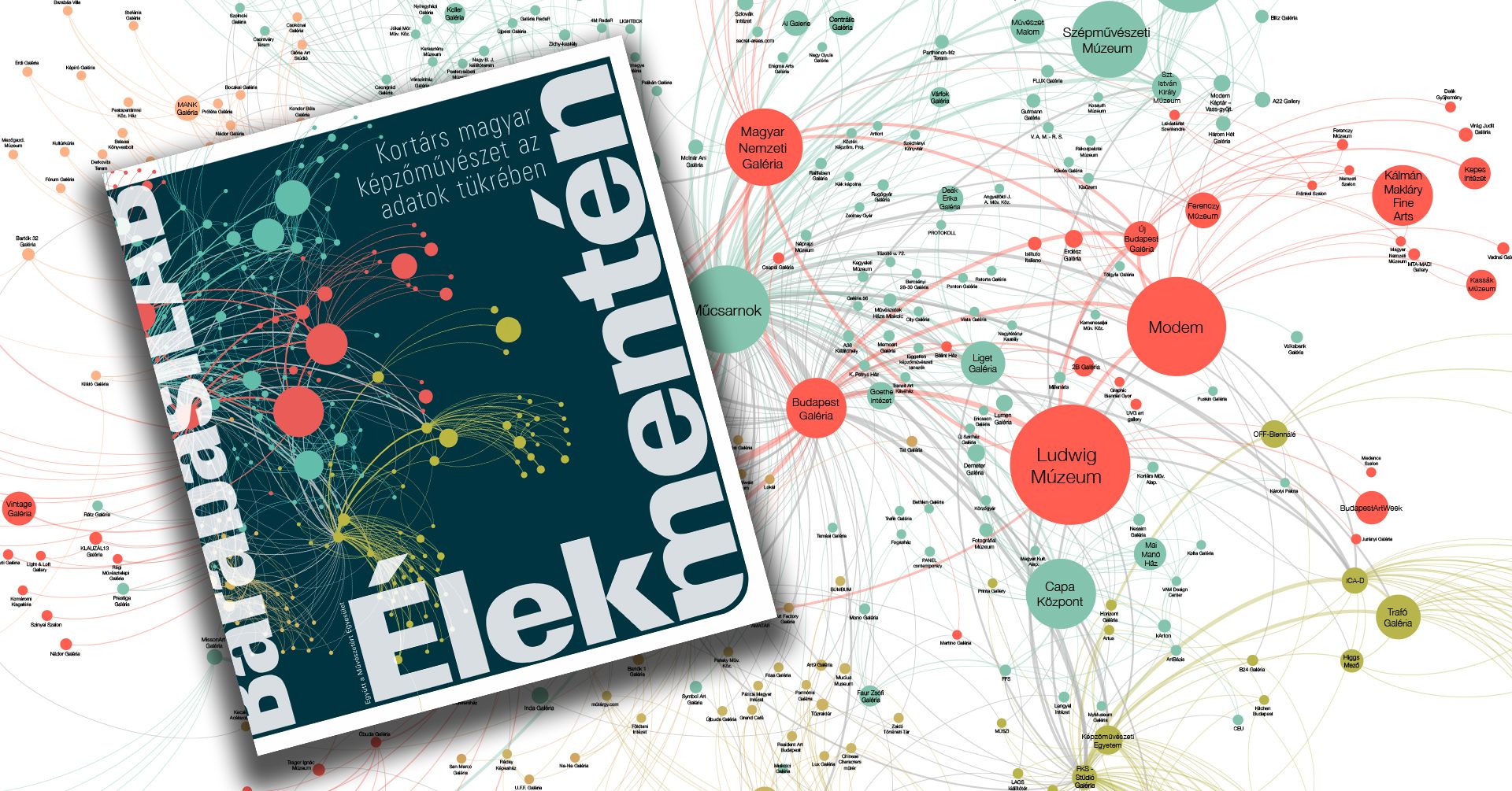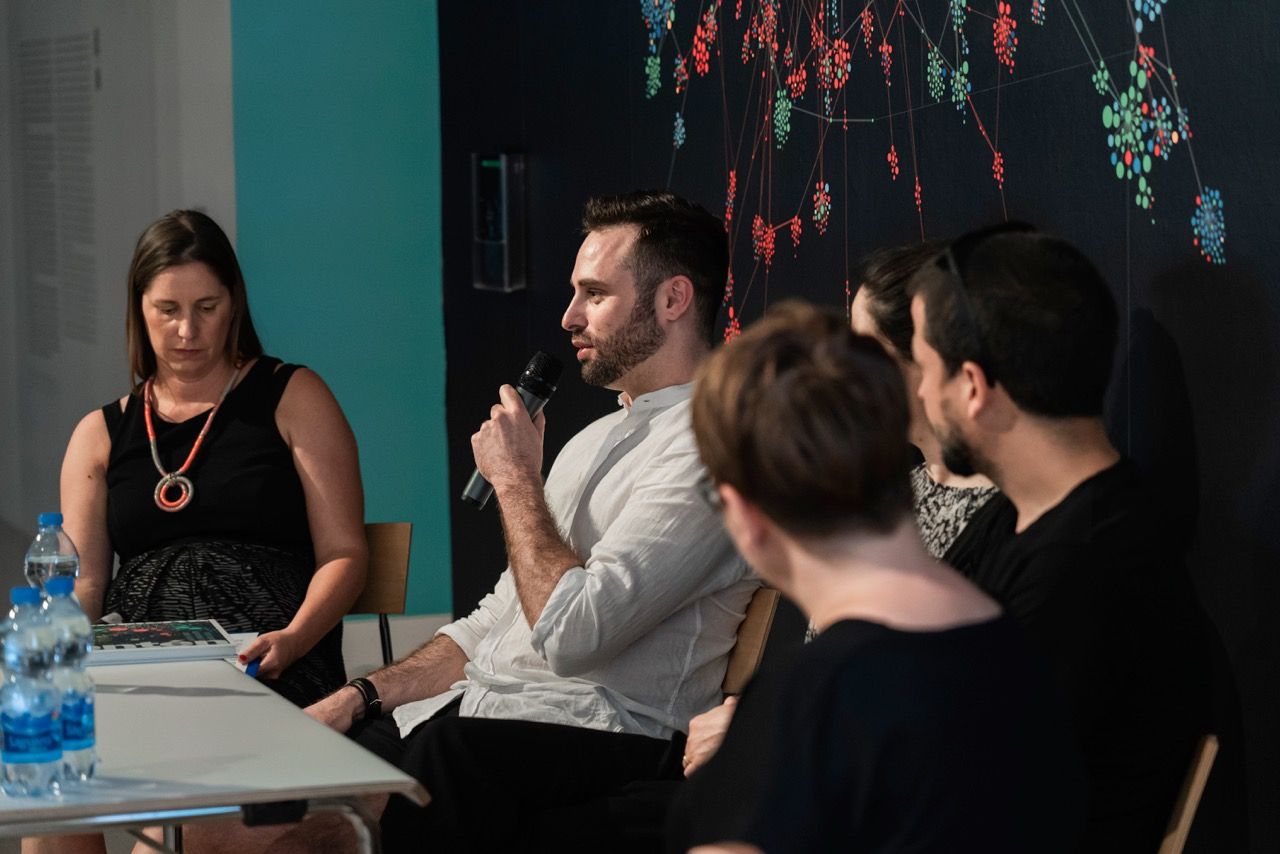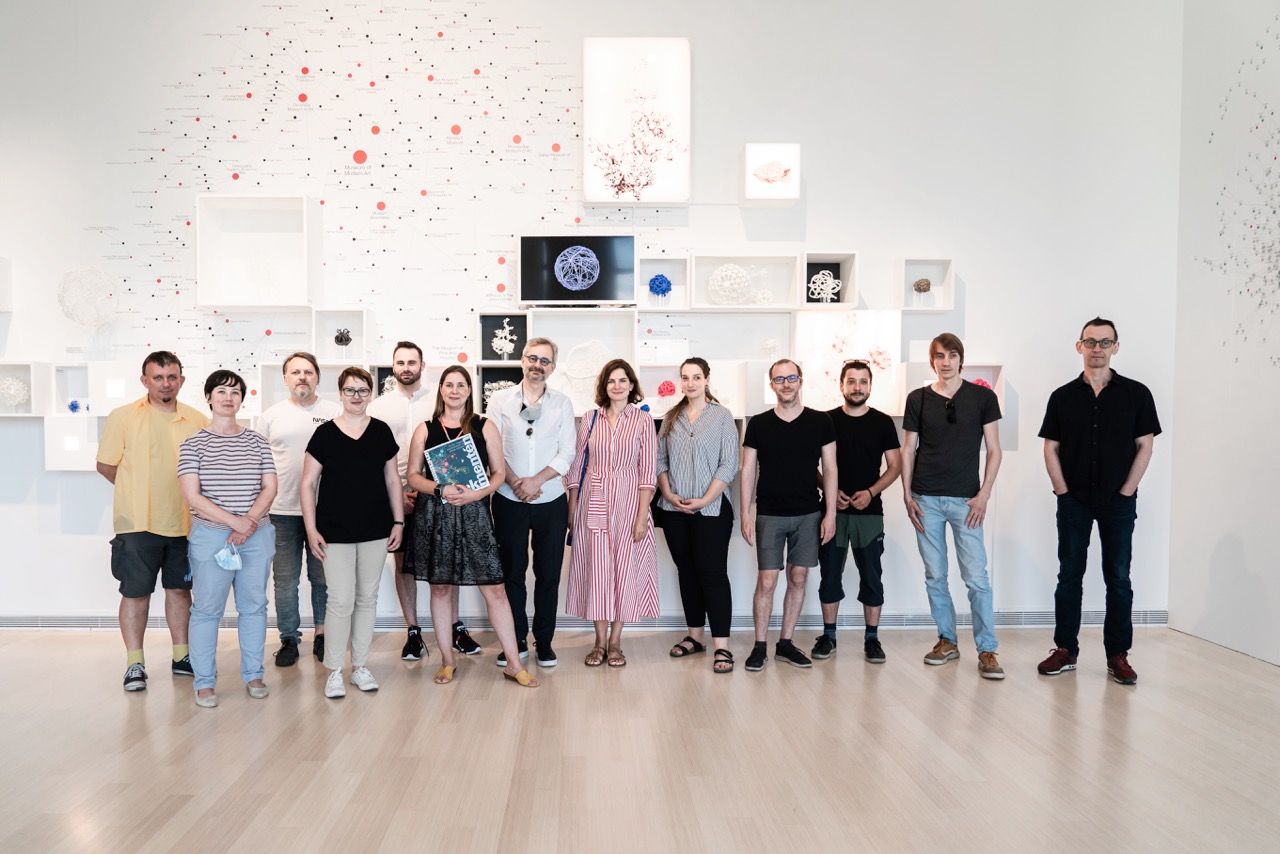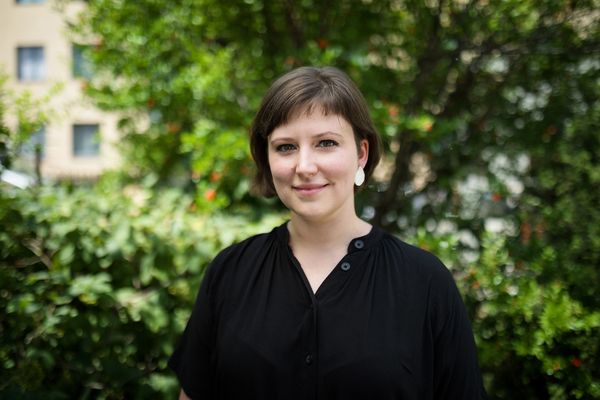How can artistic performance be measured mathematically? Can the success of artists and curators be measured? The latest volume of BarabásiLab, Élek mentén – Kortárs magyar képzőművészet az adatok tükrében (Along the edges—Hungarian Contemporary Art in the Light of Data) has been published, which seeks the answers to the above questions, among others. In our interview, we talked to one of the authors of the book, Milan Janosov, a network researcher, about the topic. Read on to find out more about contemporary art through the lens of a network researcher!
The central element of the volume is BarabásiLab: Hidden Patterns, which took place at the Ludwig Museum in 2020 October. The project titled The Hungarian Art Network, was on display at the exhibition titled The Language of Network Thinking. The MMH’s aim was to create a data-driven, as objective as possible, impression of the Hungarian art scene. A snapshot that can be expanded and developed further, and which, according to Linda Bérczi (editor and author of the volume), has the unconcealed intention of creating waves in the standing water. Our research explores the processes that have taken place in the Hungarian art scene from the 1800s to the present day and uses data visualizations to show the visibility and performance of artists, curators, institutions, and the connections between them. Our interviewee, Milan Janosov, is not only one of the authors of the volume, but also led MMH’s data research as a network researcher.

What do you enjoy most about your job as a network researcher?
The fact that it can be applied to an amazing number of areas. Even though we’ve had graphs for three hundred years and their structure and anatomy remain the same, there’s still a lot of untapped potential for their use. My work gives me insight into exciting spheres as diverse as electronic music, brain research, urbanism and, in the case of this publication, contemporary art.

The collection and processing of data can be influenced by individual factors and decisions. How do you think this can be best minimized? Can network research produce completely objective results?
When it comes to networks, we’re always trying to model reality, and models in the circles of physicists are said to be the simplest thing that answers a question. If you think of a perfect model as a perfect representation of reality, it’s the same as reality. When we collect a database, the more different data types, qualities and sources we compare, the more consistent the result will be. Detecting errors and reconciling commonalities between different databases is essentially detective work.
To what extent do you see the danger of the medium in terms of someone sitting down to research with preconceptions and wanting to convey a preconceived narrative through data visualization?
I think this happens in all disciplines, unfortunately such bias cannot be completely eliminated. However, in this project, it was particularly fortunate that although I was the one who was most involved with the data, I didn’t know too much about Hungarian art and the art scene itself, so I had no preconceptions at all. From this point of view, it can work well to have experts in the field to help correct errors in the data, while having an outsider to deal with the data itself.
How did you get involved in the project The Hungarian Art Network, which is part of Ludwig Museum’s BarabásiLab exhibition?
My work is linked to Albert-László Barabási in many ways, and I consider him to be a very influential mentor, both professionally and personally. Our paths first crossed five years ago at CEU, and it turned out that we both wrote our Master’s thesis under Professor Tamás Vicsek of Physics at ELTE. Since then, we’ve worked on a number of smaller and larger projects together. I spent three months with him in Boston, and we also work together at Datapolis. For the exhibition at Ludwig Museum, he invited an amazingly colorful team to think together on the last day of 2019, and I followed the process.

A number of art historians and professionals in the field have helped your realization of the mentioned art networks. Were there any surprises, did the data bring up anything unexpected?
Well, everyone who has been in this profession for years has an intuition about who is good and at what level. However, the data produced didn’t always align with this, and this is where things get exciting, and the question comes in: have they been biased so far, or is it the data that’s at fault? This has given rise to a constant clash of opinions, which has led to many heated discussions. Of course, this is why we’ve also been very careful with the rankings and used very specific criteria. There’s no ground truth, but what we can distinguish with great confidence is who is visible.
How much did the artists, curators and institutions in the network express their displeasure with the place they ended up in?
I think our initiative was received absolutely positively. Of course, like a lot of research completed for the first time in the world, it’s great as a discussion starter, because there were some participants who were happy as they didn’t think they’d end up in such a central position, while there were others who felt they should have been placed much further ahead. This is also about the fact that even though you’ve done a lot of great things, in the post-COVID world it doesn’t really reach people if it’s not available anywhere. This can also serve as a motivation for those who want to be more visible, to document and communicate their work.

In a previous study you looked at the success of DJs. How much did the patterns you discovered there and the mechanisms of the art scene overlap?
What was interesting in both projects, were the patterns we were able to map, in the given professional fields due to our background in physics and network science. For example, the rankings of the top 100 DJs every year show that if you can break into the top half of the list as a newcomer, it’s much easier to stay there, however, it’s very difficult to get there from the bottom. The same phenomenon also came to light regarding artists: if you exhibit in a well-regarded gallery in your first few exhibitions, you’re much more likely to stay valued throughout your career. This can work well at the level of humanity, while it won’t spoil our pleasure at the level of the individual, as it doesn’t predict our destiny in definite terms.
Can this project serve as an example for a young artist or curator in planning a career?
I do believe that there’s lots of information that can be made use of, if applied skillfully. Research certainly suggests that where an artist starts their career can have a major impact, also whether a gallerist takes them to international venues or not, as well as their gateway to even better galleries. It should be added, of course, that the methods we use, work on a statistical scale: true on a large scale, but on a small scale, it can happen, that the predictions won’t be accurate. It’s similar to the psychohistory published by the Asimov Foundation, where data is used to predict the future at a population level. This can work well at the level of humanity, but it does not spoil our pleasure at the level of the individual, since it does not show our fate in concrete terms.
Publisher:: Együtt a Művészetért Egyesület
Élek mentén | Web

Designers and Manufacturers—Part 2 | Fruzsi Fekete Jewelry and her helpers

East by KONNTRA | 5 books that the architects recommend for the summer










